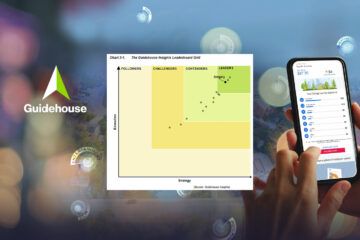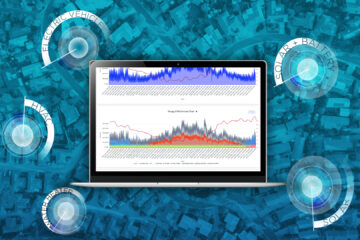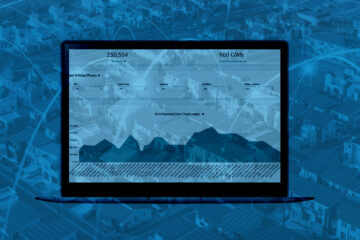As homes become “smarter”, the wealth of data coming from both smart meters and smart devices is immense. A single household smart meter can generate 400MB a year. Multiplied by the 135 million meters in the US, that’s 54 petabytes: a little more than half of the data uploaded to YouTube a year. And that’s just for uploads every 15 minutes.
Neither the adoption of smart devices nor their impact on the grid will be uniform across your territory, but it’s already clear that getting behind-the-meter insight on how energy use is changing in the home is the first step towards extending your utility’s influence on the smart home.
The question is, how best to get that insight from so much data?
Interpreting these massive, disparate datasets requires a system that can go beyond learning to optimize customer experience and grid performance. Hello utility artificial intelligence (UtilityAI).
UtilityAI allows your utility to leverage its strengths as a trusted energy advisor and steward of customer data. And do so in a way that capitalizes on the evolving smart home ecosystem, rather than trying to replace it.
Of all the smart device options utilities have to glean insight from, that journey begins with smart thermostats.
Smart Thermostats: The Next Bridge Between Utilities and their Customers
Smart thermostats (Tstats) have been installed in roughly 15-20% of homes across the country, with adoption increasing yearly. With proven energy efficiency and demand response benefits, more smart Tstats create tremendous value for utilities.
We’ve seen a constant shifting of TStat brands, with evolving embedded tech and various go-to-market strategies. As a recent example, take market leader Google and Nest whom they acquired last year. Google just announced that all Home and Nest product will be brought under one brand – Google Nest. Google Nest will winding down the Works with Nest (API) and delivering a single unified experience through the Works with Google Assistant program. While this may not immediately impact Rush Hour Rewards, it is a clear indication of more change to come.
From our vantage point, the building blocks of a scalable approach to increasing smart Tstat adoption among your customer base, and using them as a grid resource, are customer choice and pricing signals.
How to Drive Value Through Smart Thermostats
Aligning utility DSM programs to one type of smart Tstat severely limits customer choice and impedes adoption. Contrary to that, a flexible, bring-your-own-thermostat (BYOT) platform combined with proactive, hyper-personalized customer notifications can increase Tstat adoption by 5X.
For example, a customer receives a personalized notification from their utility, pointing out inefficient HVAC usage. The notification includes a calculated ROI on the purchase and installation of a new smart Tstat, along with Tstat options, multiple purchasing channels (utility marketplace, retailer, HVAC contractor, etc), and a seamless opt-in to a BYOT controls program.
With smart Tstat in place, this same customer can now be nudged towards more mutually beneficial pricing plans based on the time and locational value of the energy they’re consuming.
Dynamic pricing plans (i.e. time-varying rate plans) are an excellent way of achieving that, rewarding customers with lower prices for not using energy at the costliest times of production, which often coincides with the greatest negative environmental impacts of energy production. Most utilities have some version of dynamic pricing: real-time pricing, critical peak rebates, time-of-use, but few have used pricing to effectively enable a smarter home.
As homes get smarter, you have the data needed to optimize the whole residential energy equation and earn the trust to best serve your customers. Bidgely’s UtilityAI platform disaggregates that data to create individual home energy profiles at the appliance level. HVAC runtimes, EV charging patterns, solar production, and most importantly, the current rate plan and the optimal rate plan for that customer’s usage. This insight combined with proactive customer notifications and device controls is the beginning of an automated smart home.



0 Comments